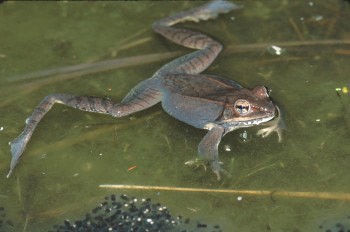It’s easy to blame your parents if you’re shy or reckless or overly self-critical. Nature may play a role, but nurture (or junior high) is most often the culprit when it comes to such things as personality traits. But what if you’re tall, or pear-shaped, or have little feet? It’s all nature – your for-better-or-worse inherited genes – right? Usually. But new research is shedding light on the not-insignificant role played by nurture, or environment, on physical attributes.
Environmental factors play a role in the growth and development of most organisms, including people. One’s genotype – or DNA – is fixed, while one’s phenotype – how a gene is expressed – is more flexible. Nutrition, for instance, can affect a person’s height, build, and longevity, because the genes for these characteristics are “phenotypically plastic.” When such basic necessities as food, shelter, and water are abundant, an organism’s genotype may be expressed very differently than if any one resource is severely limited. How the organism develops greatly determines its future fitness, or ability to survive, grow, and reproduce.
In people and other organisms that have a straightforward life cycle, the connection between childhood environment and the adult expression of traits like height is fairly well understood. In plants or animals with complex, multi-stage, multi-habitat life cycles –frogs, for example – the cause-and-effect relationships between early environment and adult phenotypic expression can be particularly hard to parse. One scientist, Rick Relyea of the University of Michigan, was recently up to the challenge.
Relyea took measurements of the mass, body shape, and length of time spent as a larva of wood frog tadpoles, some of which were raised amid predators (larval dragonflies) and some of which were raised without. After the tadpoles metamorphosed into adult frogs, he took the same measurements. He found that bigger tadpoles that had spent a longer time in tadpolehood became bigger, narrower, longer-legged frogs. The presence of dragonflies, in fact, caused the longer period of tadpolehood, which in turn led to the longer legs and larger bodies. Could the early presence of predators cause the lengthening of frogs’ legs, and the elongation of their bodies? Might longer, leggier adult frogs be better-equipped to evade predators?
Similar experiments on insects have shown that some physical adaptations that show up later as a result of early life conditions are often adaptive (like growing optional wings). The early environment is “predicting” the future environment, and certain traits are expressed (or repressed) so that the adult will have the best chances for survival.
This may or may not be the case for amphibians (or other organisms with complex life cycles), whose watery infant environs predict little about the conditions of their future terrestrial home. Larval traits may still affect adult traits, says Relyea, but the effect on the adult’s fitness could be positive, negative, or neutral. For example, other studies have found that a frog’s legs would have to lengthen at least 10 percent for jumping ability to increase; Reylea’s frogs’ legs lengthened just three to four percent. And jumping ability may not even hold significant adaptive advantages for adult frogs.


